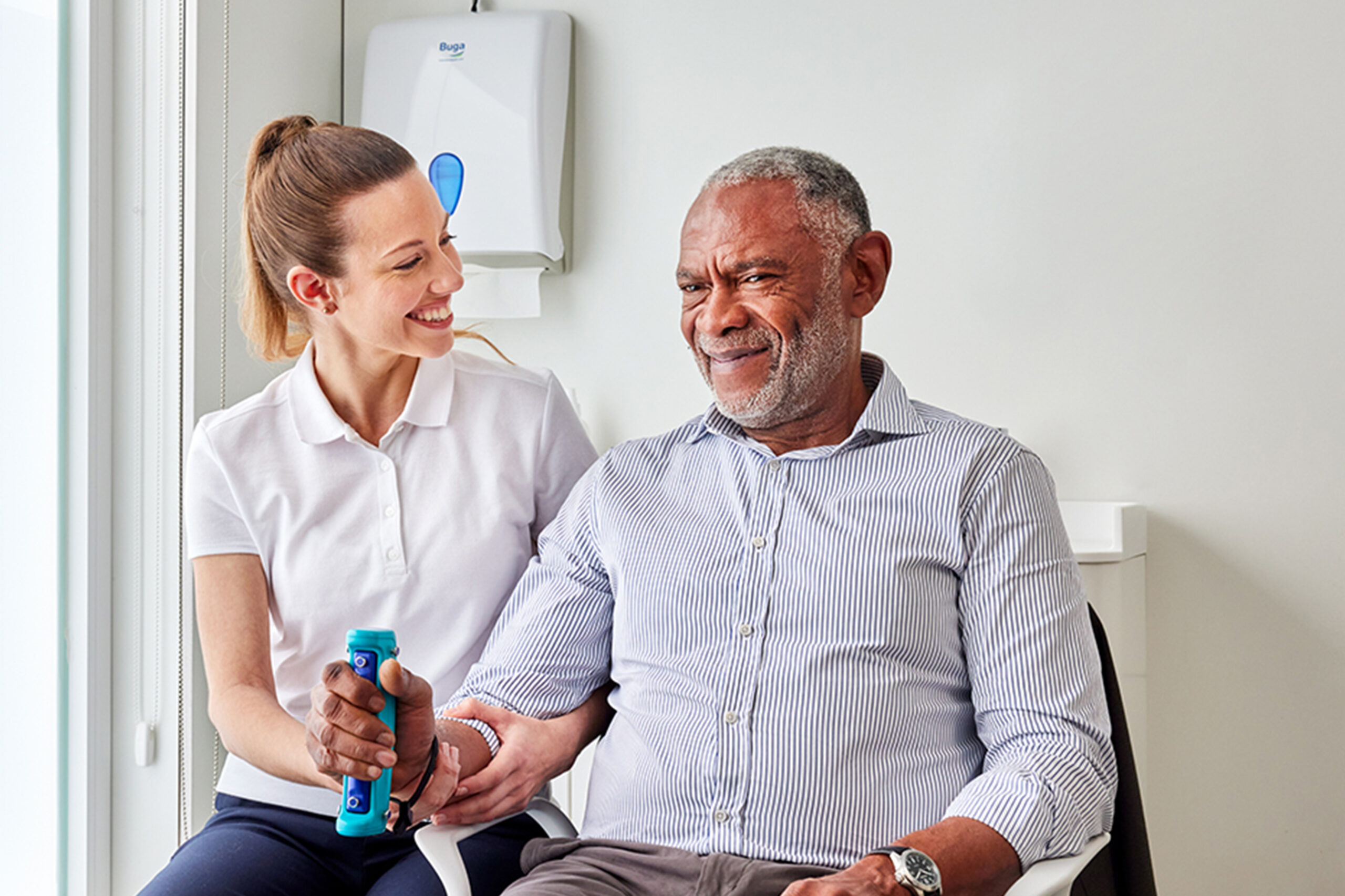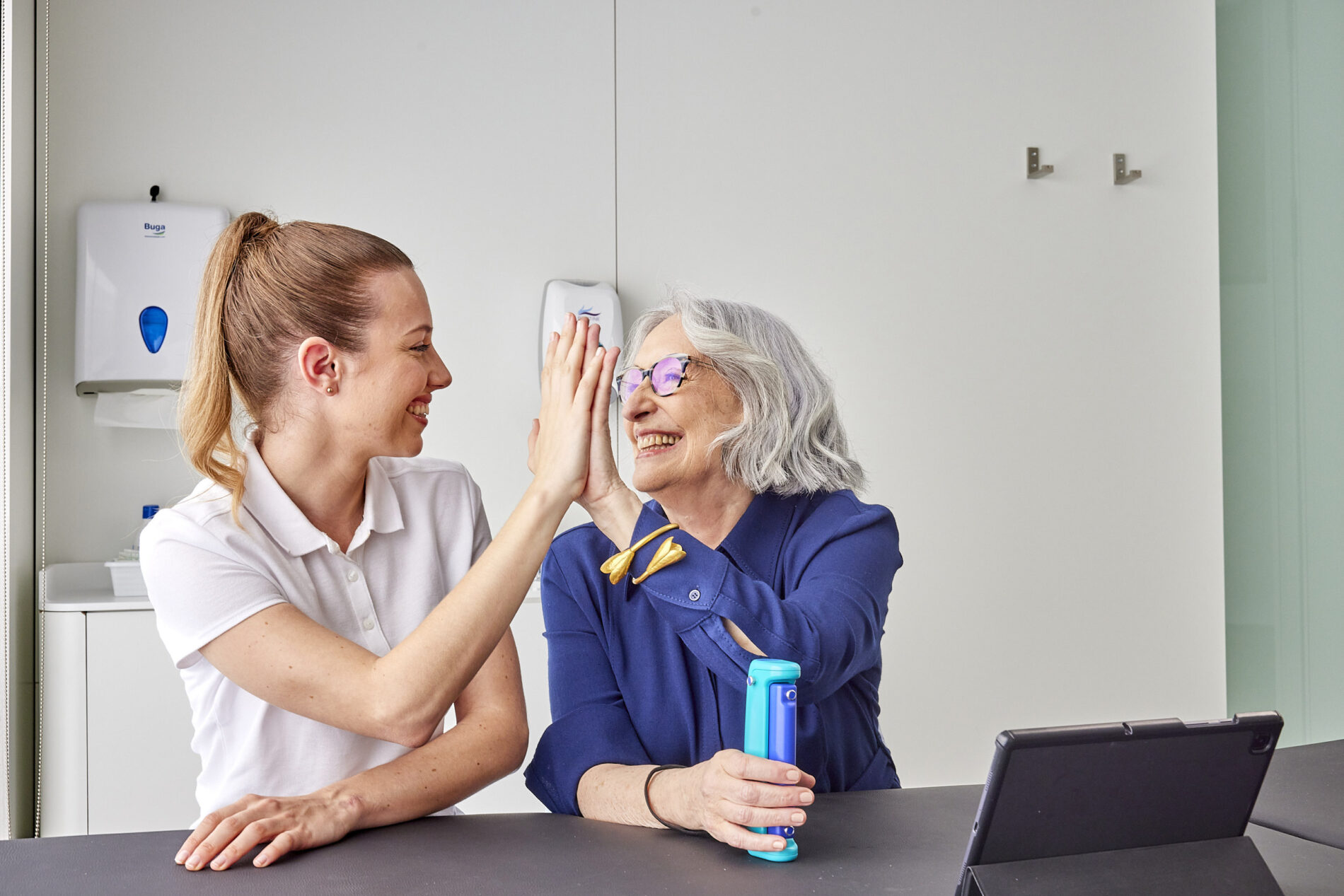Five ways to enhance your CIMT program
Constraint induced movement therapy (CIMT) can be a powerful tool to use for patients recovering from an acquired brain injury. If your patient meets the inclusion criteria for a CIMT program, you can increase their chances of success by incorporating the following elements into your rehabilitation plan.
1. Planning
Start by discussing with your patient how much consecutive time they can commit to a program. Ensure they are aware of the optimal number of days and hours per day which are most likely to have a positive effect on their rehabilitation. If they are carrying out the program at home, what equipment will they need and is it easy to set up, or will they need support to get started? Earmark an area for them to work in that’s free of distraction. Starting with a clear plan and troubleshooting any potential difficulties can help to ensure adherence to the treatment plan.
2. Establish and personalize goals
Your patient must see the link between the CIMT program and their functional goals. Break down the task and isolate the component movements to be improved. For example, if they want to be independent using the TV remote control, they will need wrist stability combined with controlled grip.
3. Focus on neuroplastic change
Select an activity which can be progressed as your client improves. This will also ensure the element of challenge, which is crucial for motivation, adherence and fuelling neuroplastic changes. Progression may come in the form of increased load, repetitions, time spent doing the task or position the task is carried out in. Ensuring a robust and objective measure to monitor performance will ensure timely progression and facilitates the ‘just right challenge’.
4. Use gamification
Serious games are designed to promote rehabilitation whilst using techniques to make experiences more engaging for patients. A 2021 systematic review found that post-stroke upper limb rehabilitation using serious games, implemented on various types of technological devices, showed greater improvements compared to conventional treatment with longer term retention for upper limb function.
5. Conduct regular reviews
Regularly reviewing your patient’s progress can help to spot any setbacks and keep your program on track. Using technology to keep track of time spent and repetitions achieved can offer an objective tool to monitor adherence.
How GripAble can support your CIMT program
GripAble offers serious games that can enhance your CIMT program. Once you have identified the movements which need to be strengthened, you can calibrate the device according to your patient’s ability. They can carry out their program in the comfort of their own home and can share their progress with you remotely.
You will be able to see the number of minutes and repetitions they have achieved, providing you with greater insight into when to progress them by recalibrating the device or exploring more complex (multi-movement) games.

